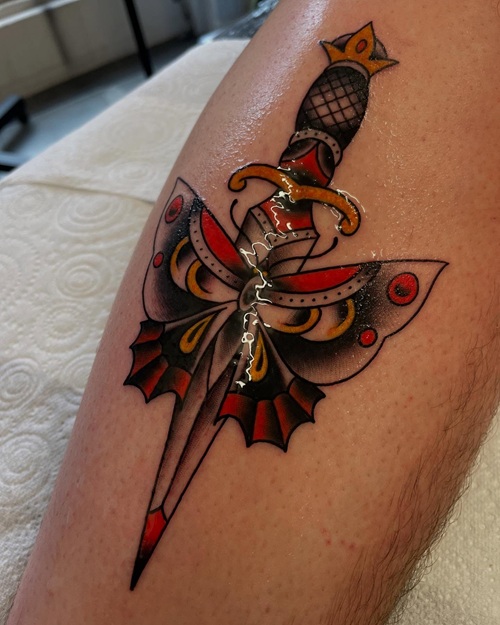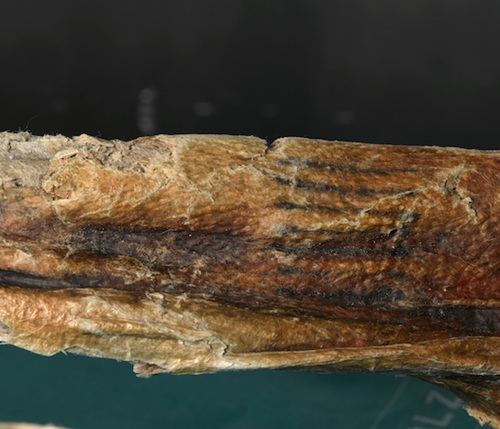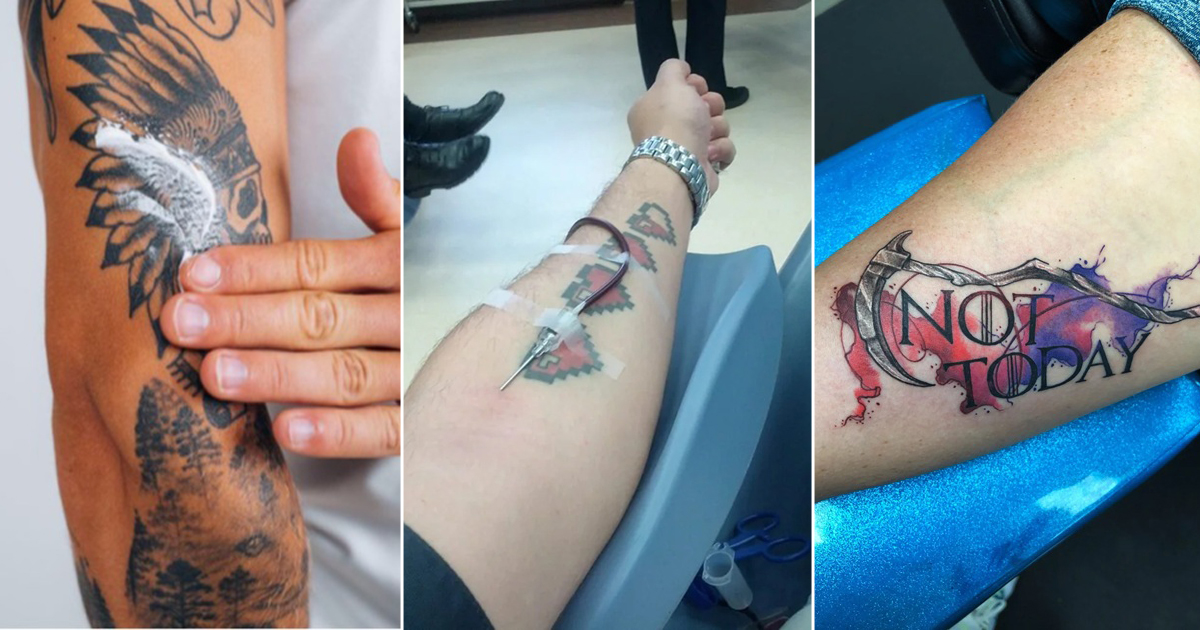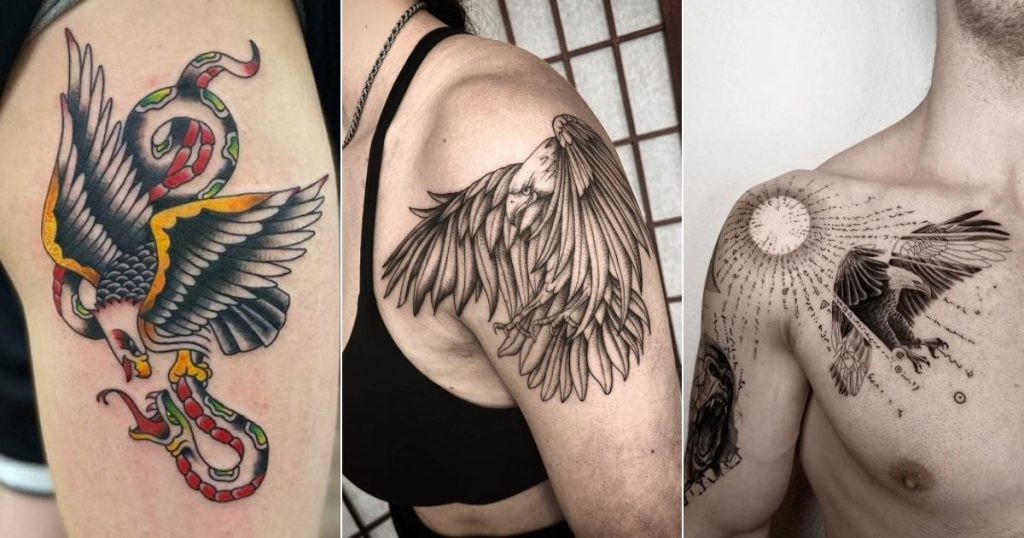Think you know tattoo myths? Think again. We’re here with lesser-known misconceptions about tattoo safety and aftercare you should know!

Tattoos carry a fog of misconceptions, from the outright wrong to the subtly misleading. If you’re browsing “tattoo myths debunked” or “tattoo safety tips” online, you’ve probably stumbled on the same repeat offenders. Let’s skip the obvious clichés and bust some myths you might not even know you believe.
Tattoo Myths Debunked
Myth 1: Color Ink Hurts More Than Black Ink

Have you heard people saying pastel or white ink is more painful? That often comes from the fact that these lighter inks are added at the end of a session when your skin is already sore. The pain isn’t because of the pigment; it’s that your skin has endured hours of needlework by then. Actually, the pain comes down to needle depth, location on your body, and your own threshold. In essence, it’s not color that hurts, it’s timing and technique.
Reality: Color doesn’t add to the pain. The pain is real, consistent, and about skin readiness, not shade.
Myth 2: Tiny Tattoos Are Always Cheaper
You might assume that a small design equals a small bill, but it isn’t that cut and dried. Complexity is the real money maker. Tiny tattoos packed with detail often require the same attention as larger, simpler pieces, along with artist fees, studio quality, and your design’s intricacy matter. The time spent matters more than the size when you’re getting your next small piece of ink.
Reality: It’s not about square inches. High detail takes time, and that time decides the price.
Myth 3: Tattoos Wreck Your Career

There was a time when visible ink clashed with “professionalism.” Today, many workplaces are fine with tasteful tattoos. In industries like healthcare, tech, or finance, it’s generally accepted. Still, certain sectors expect discretion for public-facing roles. Laws against appearance-based discrimination protect tattooed people in many regions—but yes, strategic placement still matters if you’re job hunting.
Reality: A quality tattoo won’t ruin your life or career. Just know your audience and cover it up if necessary.
Myth 4: Tattoos Cause Cancer or Illness
Decades ago, poor hygiene led to real health scares. Today, professional studios follow strict sterile practices. Viral or bacterial infection from licensed shops is rare. Concerning ink toxicity, certain pigments may carry heavy metals—some studies show elements like chromium or lead in inks. But there is no clear evidence linking tattoos to cancer. Still, it’s smart to pick studios using regulated, non-toxic inks.
Reality: Tattoos don’t cause disease when done safely. Do your research on ink sources and artist practices.
Myth 5: You Can’t Give Blood if You Have a Tattoo

This old wives’ tale has stuck around longer than it should. Most licensed studios allow you to donate before the ink is even fully healed, though rules vary by region. In many U.S. states, if your tattoo was done in a regulated shop, you can donate after just one week. In some areas, there’s a 12-week or 12-month wait.
Reality: Getting ink doesn’t bar you from helping others, as long as studio hygiene is solid and you follow regional wait times.
Myth 6: Chlorine in Pools Fades Tattoos
A tattoo is ink embedded beneath your outer skin, so swimming in a fully healed one won’t strip your color. But for fresh tattoos, pool chemicals and bacteria can disrupt healing. Once you’ve fully healed, frequent swimming might help dry your skin over time, but it won’t magically bleach your art.
Reality: Swim all you want after healing. Just don’t dive in too soon, or your skin might pay the price.
Myth 7: You Can Over‑Care for Tattoos

Some believe more moisturizer speeds healing. But overdoing it can suffocate your skin, clog pores, and invite infection. Underdoing it can lead to cracking and scabs. Beginners often don’t know that aftercare is a balancing act.
Reality: Consistent, light cleaning and moisturizing are key. Not too much. Not too little.
Myth 8: Sensitive Skin Means No Tattoos
Having sensitive skin isn’t a deal breaker. It just means you should choose an experienced artist familiar with different skin types, do a small patch test, and stick to a careful aftercare plan. Allergies are rare but possible, especially from red pigments. If irritation shows up, consult a dermatologist.
Reality: With the right approach neutral skin won’t push back. You can wear ink beautifully, even if your skin is delicate.
Tattoo Myths from History
Modern tattoo myths swirl around safety and aftercare, but the art form also carries centuries of surprising legends. Here are a few tattoo history myths and stories that reveal just how deep the roots of this craft go.
9. The Iceman’s Tattoos as Ancient Acupuncture

Myth: Ötzi the Iceman, who lived around 3250 BCE, had tattoos simply as decoration.
His 61 distinct tattoos (thin lines on his lower back, knees, and ankles) align closely with traditional acupuncture points. They likely served therapeutic purposes, possibly to relieve joint pain, not just for adornment. This flips the usual tale of tattoo history myths by showing tattoos were once medicinal tools long before becoming body art.
10. Sailors and Compasses!
Myth: Nautical stars or compasses tattooed on sailors helped guide them home and ward off getting lost at sea.
Sailors did believe in tattoo symbolism for protection. However, the myth of literal navigational aid is metaphorical. Tattoos like pig-and-fowl pairings were thought to ward off drowning. But compass stars were symbols of good fortune and stability, not magic compasses. So it’s a myth spun into maritime lore rather than actual superstition.
11. Japanese Professor Masaichi’s Tattooed Cadaver Study

Myth: A Japanese doctor named Fukushi Masaichi secretly studied tattoo art by practicing on or preserving cadaver skin.
Truth: This astonishing story is real. Dr Masaichi (1878–1956), a pathologist at Nippon Medical School, preserved over 2,000 pieces of tattooed human skin, carefully removed during autopsies. His collection of tattooed hides is one of the world’s only known collections from deceased individuals. It’s not folklore, just a macabre but true chapter in tattoo history research.
12. Tattoos in Prehistoric Cultures
Myth: Tattoos emerged in one culture and spread from there.
Tattooing has independently appeared across the globe, from Ötzi in Europe, to Egyptian priestesses, to Austronesian hand-tapping in Taiwan and the Philippines, and Inuit “kakiniit” facial tattoos marking womanhood. It’s a human thread woven through millennia of history.
A good tattoo experience comes from knowing the facts and asking the right questions: Did your artist use sterile equipment? Have you looked at healed examples? Are your aftercare habits on point? Armed with real knowledge, you can stamp your skin without the baggage of old myths. Stay curious, stay informed, and go get that art you’ve been dreaming of.




